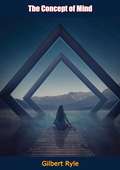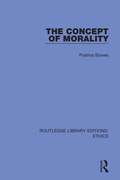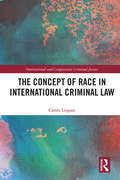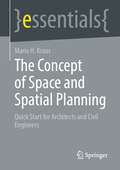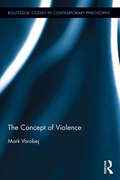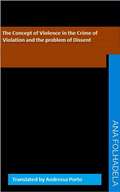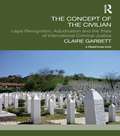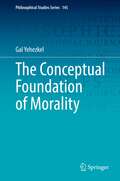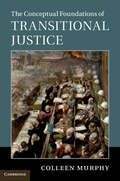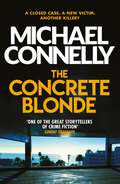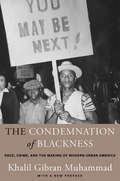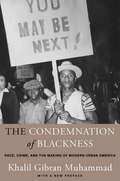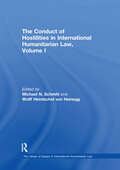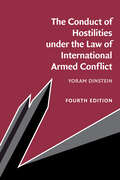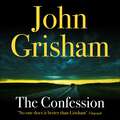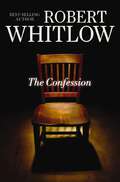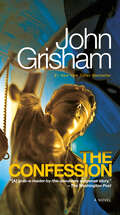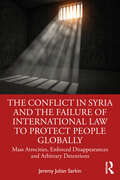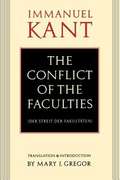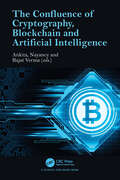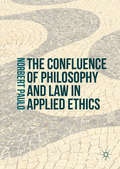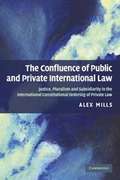- Table View
- List View
The Concept of Mind: 60th Anniversary Edition
by Gilbert RyleThe Concept of Mind is a 1949 book by the philosopher Gilbert Ryle, in which the author argues that "mind" is "a philosophical illusion hailing chiefly from René Descartes and sustained by logical errors and 'category mistakes' which have become habitual." The work has been cited as having "put the final nail in the coffin of Cartesian dualism" and has been seen as a founding document in the philosophy of mind, which received professional recognition as a distinct and important branch of philosophy only after 1950.—Print ed.
The Concept of Morality
by Pratima BowesIn this book, originally published in 1959, the author believes that general moral concepts embody conceptions of standards in accordance with which particular moral judgments proceed and these may become objects of theoretical understanding and knowledge – and hence be treated as facts in some context of a moral nature – in an ethical enquiry that is philosophical in character. The book clarifies the implications of conceptions which are used when aspects of our experiences are evaluated from a distinctive point of view, namely that of morality. It examines some of the theories which suggest that the function of ethical philosophy is something quite other than what traditional philosophers believed it to be, namely by asking what goodness or justice is.
The Concept of Race in International Criminal Law (International and Comparative Criminal Justice)
by Carola LingaasMembers of racial groups are protected under international law against genocide, persecution, and apartheid. But what is race – and why was this contentious term not discussed when drafting the Statute of the International Criminal Court? Although the law uses this term, is it legitimate to talk about race today, let alone convict anyone for committing a crime against a racial group? This book is the first comprehensive study of the concept of race in international criminal law. It explores the theoretical underpinnings for the crimes of genocide, apartheid, and persecution, and analyses all the relevant legal instruments, case law, and scholarship. It exposes how the international criminal tribunals have largely circumvented the topic of race, and how incoherent jurisprudence has resulted in inconsistent protection. The book provides important new interpretations of a problematic concept by subjecting it to a multifaceted and interdisciplinary analysis. The study argues that race in international criminal law should be constructed according to the perpetrator's perception of the victims’ ostensible racial otherness. The perpetrator’s imagination as manifested through his behaviour defines the victims’ racial group membership. It will be of interest to students and practitioners of international criminal law, as well as those studying genocide, apartheid, and race in domestic and international law.
The Concept of Space and Spatial Planning: Quick Start for Architects and Civil Engineers (essentials)
by Mario H. KrausSpace is an ambiguous and sometimes controversial term. Spatial planning is based on a delicate and changeable social balance, which is reflected in the legal basis (with German law code as example) and everyday implementation. In this essential, approaches from phenomenology are used to classify the various concepts of space.
The Concept of Violence (Routledge Studies in Contemporary Philosophy)
by Mark VorobejThis study focuses on conceptual questions that arise when we explore the fundamental aspects of violence. Mark Vorobej teases apart what is meant by the term ‘violence,’ showing that it is a surprisingly complex, unwieldy and highly contested concept. Rather than attempting to develop a fixed definition of violence, Vorobej explores the varied dimensions of the phenomenon of violence and the questions they raise, addressing the criteria of harm, agency, victimhood, instrumentality, and normativity. Vorobej uses this multifaceted understanding of violence to engage with and complicate existing approaches to the essential nature of violence: first, Vorobej explores the liberal tradition that ties violence to the intentional infliction of harm, and that grows out of a concern for protecting individual liberty or autonomy. He goes on to explore a more progressive tradition – one that is usually associated with the political left – that ties violence to the bare occurrence of harm, and that is more concerned with an equitable promotion of human welfare than with the protection of individual liberty. Finally, the book turns to a tradition that operates with a more robust normative characterization of violence as a morally flawed (or forbidden) response to the ontological fact of (human) vulnerability. This nuanced and in-depth study of the nature of violence will be especially relevant to researchers in applied ethics, peace studies and political philosophy.
The Concept of Violence in the Crime of Violation And the Problem of Dissent
by Ana FolhadelaThe sexual crimes, as a fundamental reflection of a social vision historically determined by the intimacy relations, have been target of an intense evolution on opposite directions. In one hand, there has been a restriction about the behaviors that previously were considered criminal, with the growth of respect for the individual freedom e sexual determination by the adult person and by others, the cast of those same behaviors have grown, with the increasing of the social intolerance for those that are considered to violate this, so hardly earned, freedom.
The Concept of the Civilian: Legal Recognition, Adjudication and the Trials of International Criminal Justice
by Claire GarbettThe Concept of the Civilian: Legal Recognition, Adjudication and the Trials of International Criminal Justice offers a critical account of the legal shaping of civilian identities by the processes of international criminal justice. It draws on a detailed case-study of the International Criminal Tribunal for the former Yugoslavia to explore two key issues central to these justice processes: first, how to understand civilians as a social and legal category of persons and second, how legal practices shape victims’ identities and redress in relation to these persons. Integrating socio-legal concepts and methodologies with insights from transitional justice scholarship, Claire Garbett traces the historical emergence of the concept of the civilian, and critically examines how the different stages of legal proceedings produce its conceptual form in distinction from that of combatants. This book shows that the very notions of civilian, protection and redress that underpin current practices of international criminal justice continue to evoke both definitional difficulties and analytic contestation. Using a unique interdisciplinary approach, the author provides a critical analysis of the relationship between mechanisms of transitional justice and civilians that will be of interest to scholars and students in the fields of transitional justice, sociology, law, politics and human rights.
The Conceptual Foundation of Morality (Philosophical Studies Series #145)
by Gal YehezkelThis book offers a solution to the ancient philosophical problem regarding the nature and the justification of morality. The importance of this subject matter is obvious, not merely as an abstract philosophical problem, but perhaps even more as a practical challenge, regarding the way we ought to live our lives: the values that ought to direct us, and the ends that we ought to pursue.In the course of this inquiry, a wide array of philosophical topics is explored: the nature of intentional action, and the role played by reason and desires in agency; the question of the final end of agency – better known in ancient terminology as the question of the purpose of life, and in modern terms as the question of the meaning of life; the nature of moral obligations and their rational justification; the challenge posed by determinism for the freedom of the will, with its implications on fatalism and moral responsibility; and normative questions regarding the value of life. This book is of interest not only to professional philosophers, but also to any intellectual who is concerned with questions about morality, our nature as agents, and the end that we ought to pursue.
The Conceptual Foundations of Transitional Justice
by Colleen MurphyMany countries have attempted to transition to democracy following conflict or repression, but the basic meaning of transitional justice remains hotly contested. In this book, Colleen Murphy analyses transitional justice - showing how it is distinguished from retributive, corrective, and distributive justice - and outlines the ethical standards which societies attempting to democratize should follow. She argues that transitional justice involves the just pursuit of societal transformation. Such transformation requires political reconciliation, which in turn has a complex set of institutional and interpersonal requirements including the rule of law. She shows how societal transformation is also influenced by the moral claims of victims and the demands of perpetrators, and how justice processes can fail to be just by failing to foster this transformation or by not treating victims and perpetrators fairly. Her book will be accessible and enlightening for philosophers, political and social scientists, policy analysts, and legal and human rights scholars and activists.
The Concise Dictionary of Crime and Justice: Walsh: Criminology + Davis: The Concise Dictionary Of Crime And Justice 2e
by Mark S. DavisA new approach to making everyday criminal justice terms accessible A useful reference work for faculty and students, criminal justice professionals, writers, and anyone else interested in criminal justice and criminology, The Concise Dictionary of Crime and Justice, Second Edition, is an excellent, wide-ranging resource with clear definitions for over 3,000 key criminal justice terms. Often going beyond simply definitions, the dictionary places the entries in a meaningful context, connecting the definitions with other concepts. The dictionary uniquely presents common misperceptions for selected terms, along with additional relevant information to clarify a term’s use or derivation.
The Concise Dictionary of Crime and Justice: Walsh: Criminology + Davis: The Concise Dictionary Of Crime And Justice 2e
by Mark S. DavisA new approach to making everyday criminal justice terms accessible A useful reference work for faculty and students, criminal justice professionals, writers, and anyone else interested in criminal justice and criminology, The Concise Dictionary of Crime and Justice, Second Edition, is an excellent, wide-ranging resource with clear definitions for over 3,000 key criminal justice terms. Often going beyond simply definitions, the dictionary places the entries in a meaningful context, connecting the definitions with other concepts. The dictionary uniquely presents common misperceptions for selected terms, along with additional relevant information to clarify a term’s use or derivation.
The Concrete Blonde (Harry Bosch Series #3)
by Michael ConnellyFrom the bestselling author of The Lincoln Lawyer and The Gods of Guilt. When LAPD detective Harry Bosch shot and killed Norman Church - the 'Dollmaker' - the police were convinced it marked the end of the search for one of the city's most bizarre serial killers.But four years later, Norman Church's widow is taking Bosch to court, accusing him of killing the wrong man. To make matters worse, Bosch has just received a note, eerily reminiscent of the ones the Dollmaker used to taunt him with, giving him a location where a body can be found.Is the Dollmaker still alive? Or is this the work of a vicious copycat killer, determined to repeat the Dollmaker's grisly feats and destroy Bosch's career in the process?
The Condemnation of Blackness: Race, Crime, and the Making of Modern Urban America, With a New Preface
by Khalil Gibran MuhammadChronicling the emergence of deeply embedded notions of black people as a dangerous race of criminals by explicit contrast to working-class whites and European immigrants, this fascinating book reveals the influence such ideas have had on urban development and social policies.
The Condemnation of Blackness: Race, Crime, and the Making of Modern Urban America, With a New Preface
by Khalil Gibran MuhammadChronicling the emergence of deeply embedded notions of black people as a dangerous race of criminals by explicit contrast to working-class whites and European immigrants, this fascinating book reveals the influence such ideas have had on urban development and social policies.
The Conduct of Hostilities in International Humanitarian Law, Volume I
by Wolff Heintschel HeineggThis volume is the first of two addressing the legal regime governing the use of force during armed conflicts. Traditionally labeled 'Hague Law', today the norms it examines are commonly referred to as 'conduct of hostilities rules'. At the heart of this body of law is the principle of distinction, which requires that civilians and civilian objects be distinguished from combatants and military objectives during military operations. It is the purest expression of the foundational balance between humanitarian considerations and military necessity that has underpinned international humanitarian law since its inception. The essays selected consider the theoretical and practical difficulties of maintaining the balance in the face of evolving means and methods of warfare and competing perspectives as to how it is best achieved. Also addressed is the law governing warfare at sea and in the air. Essays focusing on the former examine early norms and analyze their continuing relevance to today's maritime operations whilst those exploring the latter inject much needed clarity into the subject, an essential task in light of the centrality of aerial warfare in modern combat operations.
The Conduct of Hostilities under the Law of International Armed Conflict
by Yoram DinsteinWritten by the leading commentator on the subject, this is the seminal textbook on the law of international armed conflict. Focusing on recent issues arising in the course of hostilities between States, it explores the dividing line between lawful and unlawful combatants, the meaning of war crimes and command responsibility, the range of prohibited weapons, the distinction between combatants and civilians, the parameters of targeting and proportionality, the loss of protection from attack (including 'direct participation in hostilities') and special protection (granted, pre-eminently, to the environment and to cultural property). In a completely revised and updated text, the author expertly covers the key principles and includes important new issues, including the use of autonomous weapons and the complexities of urban warfare. The subtleties and nuances of the international law of armed conflict are made accessible to the student and practitioner alike, whilst retaining the academic rigour of previous editions.
The Conduct of Hostilities under the Law of International Armed Conflict
by Yoram DinsteinThe book serves as a companion to three other volumes published by Cambridge University Press, dealing respectively with the jus ad bellum, the law of belligerent occupation, and non-international armed conflicts. It is devoted to the core of the jus in bello - that is, the conduct of hostilities on land, at sea and in the air in inter-State armed conflicts - analyzed against the background of customary international law and treaties in force. The book deals with both means and methods of modern warfare. It addresses issues of general non-combatant protection, the principle of proportionality in collateral damage to civilians, and special protection, especially of the environment and cultural property. It also considers the relevant dimensions of international criminal law and deals with controversial matters such as unlawful combatancy, direct participation of civilians in hostilities and the use of 'human shields'. Case law and legal literature are cited throughout.
The Confession
by John GrishamFor every innocent man sent to prison, there is a guilty one left on the outside. He doesn't understand how the police and prosecutors got the wrong man, and he certainly doesn't care. He just can't believe his good luck. Time passes and he realizes that the mistake will not be corrected: the authorities believe in their case and are determined to get a conviction. He may even watch the trial of the person wrongly accused of his crime. He is relieved when the verdict is guilty. He laughs when the police and prosecutors congratulate themselves. He is content to allow an innocent person to go to prison, to serve hard time, even to be executed.Travis Boyette is such a man. In 1998, in the small East Texas city of Sloan, he abducted, raped, and strangled a popular high school cheerleader. He buried her body so that it would never be found, then watched in amazement as police and prosecutors arrested and convicted Donté Drumm, a local football star, and marched him off to death row.Now nine years have passed. Travis has just been paroled in Kansas for a different crime; Donté is four days away from his execution. Travis suffers from an inoperable brain tumor. For the first time in his miserable life, he decides to do what's right and confess.But how can a guilty man convince lawyers, judges, and politicians that they're about to execute an innocent man?(P)2010 Random House, LLC
The Confession
by Robert Whitlow"Fans of JohnGrisham will find much to like here." --Library JournalConfession is goodfor the soul, but it could mean death to an ambitious young lawyer.Assistant DA Holt Douglas has made a career of gettingconfessions from criminals. With a confession in hand, he knows a guilty pleais soon to follow. In the midst of professional success, Holt is haunted by asecret--a lie he buried in the grave of his best friend. Holt's crime is hidden fromall eyes--family, friends, police, and his soon-to-be fiancé.But the truth has a way of coming back to life.With obsessive prosecutorial zeal, Holt reopens a cold caseinvolving the death of the town's wealthiest citizen. The man's death was ruleda suicide, but Holt suspects murder. Facing fierce opposition, he is determinedto expose the killer. Holt slowly begins to unravel the facts.And comes face-to-face with his own guilty conscience.With his job, his relationship with the woman he loves, andhis future at risk, Holt skirts the boundary between truth and lies, confessionand hypocrisy, redemption and ruin. Can he survive longenough to finally make the right choice?"Readers will find plenty to love about this suspenseful novel as theywatch its appealing main character juggle personal, professional, and spiritualcrisis with a combination of vulnerability and strength." --CBA Retailers and Resources, regarding The Living Room
The Confession: A Novel (Playaway Adult Fiction Ser.)
by John Grisham#1 NEW YORK TIMES BESTSELLER • An innocent man is about to be executed. Only a guilty man can save him. In 1998, in the small East Texas city of Sloan, Travis Boyette abducted, raped, and strangled a popular high school cheerleader. He buried her body so that it would never be found, then watched in amazement as police and prosecutors arrested and convicted Donté Drumm, a local football star, and marched him off to death row. Now nine years have passed. Travis has just been paroled in Kansas for a different crime; Donté is four days away from his execution. Travis suffers from an inoperable brain tumor. For the first time in his miserable life, he decides to do what&’s right and confess. But how can a guilty man convince lawyers, judges, and politicians that they&’re about to execute an innocent man?Don&’t miss John Grisham&’s new book, THE EXCHANGE: AFTER THE FIRM!
The Conflict in Syria and the Failure of International Law to Protect People Globally: Mass Atrocities, Enforced Disappearances and Arbitrary Detentions
by Jeremy Julian SarkinThis book explores, through the lens of the conflict in Syria, why international law and the United Nations have failed to halt conflict and massive human rights violations in many places around the world which has allowed tens of millions of people to be killed and hundreds of millions more to be harmed. The work presents a critical socio-legal analysis of the failures of international law and the United Nations (UN) to deal with mass atrocities and conflict. It argues that international law, in the way it is set up and operates, falls short in dealing with these issues in many respects. The argument is that international law is state-centred rather than victim-friendly, is, to some extent, outdated, is vague and often difficult to understand and, therefore, at times, hard to apply. While various accountability processes have come to the fore recently, processes do not exist to assist individual victims while the conflict occurs or the abuses are being perpetrated. The book focuses on the problems of international law and the UN and, in the context of the many enforced disappearances and arbitrary detentions in Syria, why nothing has been done to deal with a rogue state that has regularly violated international law. It examines why the responsibility to protect (R2P) has not been applied and why it ought to be used, generally, and in Syria. It uses the Syrian context to evaluate the weaknesses of the system and why reform is needed. It examines the UN institutional mechanisms, the role they play and why a civilian protection system is needed. It examines what mechanism ought to be set up to deal with the possible one million people who have been disappeared and detained in Syria. The book will be a valuable resource for students, academics and policy-makers working in the areas of public international law, international human rights law, political science and peace and security studies.
The Conflict of the Faculties
by Immanuel Kant Mary J. Gregor<p>It is in the interest of the totalitarian state that subjects not think for themselves, much less confer about their thinking. Writing under the hostile watch of the Prussian censorship, Immanuel Kant dared to argue the need for open argument, in the university if nowhere else. In this heroic criticism of repression, first published in 1798, he anticipated the crises that endanger the free expression of ideas in the name of national policy. <p>Composed of three sections written at different times, <i>The Conflict of the Faculties</i> dwells on the eternal combat between the "lower" faculty of philosophy, which is answerable only to individual reason, and the faculties of theology, law, and medicine, which get "higher" precedence in the world of affairs and whose teachings and practices are of interest to the government. Kant makes clear, for example, the close alliance between the theological faculty and the government that sanctions its teachings and can resort to force and censorship. All the more vital and precious, then, the faculty of philosophy, which encourages independent thought before action. The first section, "The Conflict of the Philosophy Faculty with the Theology Faculty," is essentially a vindication of the right of the philosophical faculty to freedom of expression. In the other sections the philosopher takes a long and penetrating look at medicine and law, the one preserving the physical "temple" and the other regulating its actions.</p>
The Confluence of Cryptography, Blockchain and Artificial Intelligence
by Rajat Verma Nayancy AnkitaWith blockchain underpinning cryptocurrencies and improving IoT security, this book uncovers the evolution of blockchain (1.0 to 4.0) and its applications. It also introduces AI, discussing its development, paradigms, and industry-wide impact. The book explores the integration of cryptography, blockchain, and artificial intelligence (AI) in areas such as big data, bioinformatics, IoT, 5G, and Industry 4.0. It highlights how these technologies drive the digital revolution, enabling multi-agent systems, autonomous models, and enhanced security.
The Confluence of Philosophy and Law in Applied Ethics
by Norbert PauloThe law serves a function that is not often taken seriously enough by ethicists, namely practicability. A consequence of practicability is that law requires elaborated and explicit methodologies that determine how to do things with norms. This consequence forms the core idea behind this book, which employs methods from legal theory to inform and examine debates on methodology in applied ethics, particularly bioethics. It is argued that almost all legal methods have counterparts in applied ethics, which indicates that much can be gained from comparative study of the two. The author first outlines methods as used in legal theory, focusing on deductive reasoning with statutes as well as analogical reasoning with precedent cases. He then examines three representative kinds of contemporary ethical theories, Beauchamp and Childress's principlism, Jonsen and Toulmin's casuistry, and two versions of consequentialism--Singer's preference utilitarianism and Hooker's rule-consequentialism--with regards to their methods. These examinations lead to the Morisprudence Model for methods in applied ethics.
The Confluence of Public and Private International Law
by Alex MillsA sharp distinction is usually drawn between public international law, concerned with the rights and obligations of states with respect to other states and individuals, and private international law, concerned with issues of jurisdiction, applicable law and the recognition and enforcement of foreign judgments in international private law disputes before national courts. Through the adoption of an international systemic perspective, Dr Alex Mills challenges this distinction by exploring the ways in which norms of public international law shape and are given effect through private international law. Based on an analysis of the history of private international law, its role in US, EU, Australian and Canadian federal constitutional law, and its relationship with international constitutional law, he rejects its conventional characterisation as purely national law. He argues instead that private international law effects an international ordering of regulatory authority in private law, structured by international principles of justice, pluralism and subsidiarity.
